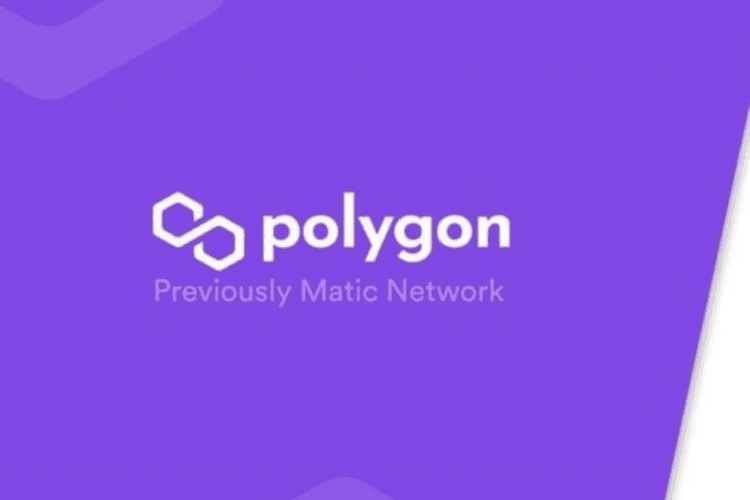Polygon Network —The Ultimate Scalability Solution

Blockchain technology and its by-products like cryptocurrencies, decentralized finance (DeFi), and decentralized applications (dApps) are steadily climbing the charts. In the spirit of striking the iron while it’s hot, new DeFi projects, and dApps are emerging every other day. In fact, there are over 2500 dApps currently running only on the Ethereum network.
Some of these projects are highly promising and have excellent use cases. Yet, the lack of scalability has become a huge roadblock hindering their expansion. This is the very problem that Polygon Network (previously Matic) aims to solve.
Why is Mass Adoption of Blockchains Still an Issue?
The Cryptokitties congestion crisis on Ethereum displayed the lack of scalability of the largest dApp and DeFi blockchain. CryptoKittes dApp became so popular that the number of transactions made in the game caused the network to crash. This right here is the problem.
Even some of the most popular blockchain networks of today are not equipped for mass adoption. The dApps built on these networks are not scalable, and there is a limit to the number of users they can support. Combined with the poor user experience on these platforms, this acts as the major issue for mass adoption.
The few blockchain networks that can boast of scalability and high transaction throughput, usually have to compromise on decentralization or security. Of course, we’ve seen the emergence of new blockchain networks that claim to solve all these problems but what they lack is the massive developer ecosystem that exists for popular networks like Ethereum.
One of the solutions to these issues is a layer-2 solution that achieves scalability by taking the load off the mainnet blockchain. Speaking of that, Polygon Network has become the most popular scalability solution.
Solving the Problem of Scalability Using Side Chains
The Polygon Network is a layer-2 scalability and interoperability framework for existing blockchain networks. It addresses some of the major issues of the present-day blockchain platforms like poor usability, network congestion, high gas fees, and lack of community governance.
Polygon’s predecessor Matic network was a side-chain solution for the Ethereum blockchain. It employs an adapted version of Plasma technology to process transactions off-chain before sending them to the Ethereum mainnet. This enables the platform to achieve very high throughput, solving Ethereum’s lack of high scalability.
It does not even compromise the decentralization or security of the network as the network uses the proof-of-stake (PoS) consensus protocol to ensure decentralization and the Plasma framework ensures asset security on the platform.
Ethereum’s Internet of Blockchains
The newly announced, revamped version of the Matic network is Polygon. In addition to being a scaling solution, Polygon acts as a full-fledged platform for the development of Ethereum compatible, interoperable blockchains. It aims for a future where walled gardens do not exist and blockchains operate together as a part of a larger interconnected ecosystem.
Using Polygon, developers can build next-generation blockchain networks that are capable of communicating with each other as well as the Ethereum mainnet. The best part is that these blockchains can be tailor-made with specific functionalities to suit the developer’s requirements. When blockchain networks with such unique functionalities are interconnected, they can overcome their individual limitations.
The Polygon architecture mainly consists of four layers - the Ethereum layer, the Security layer, Polygon Network layer, and the Execution layer. The Ethereum layer is responsible for finalizing transactions, staking, and communicating with the Ethereum mainnet. The security layer runs parallel to the Ethereum layer and provides validation. The Polygon Network layer consists of the ecosystem of blockchains built on the Polygon network, and the execution layer consists of the Ethereum Virtual Machine (EVM) used for executing smart contracts.
Despite the rebranding of the project and its overall purpose, Polygon has retained its native MATIC token for utility and governance.
Promising Projects on Polygon
Polygon network’s innovative architecture opens up a plethora of new possibilities for the development of dApps and other projects. Projects will not only benefit from the scalability and security of Polygon but will also be fully compatible with the Ethereum network. Here are some exciting projects built on the Polygon network.
1. Decentraland: Decentraland is a virtual reality platform that lets users buy, sell and trade in a fully virtual world. It also allows them to create artwork, challenges, and scenes. Matic is collaborating with Decentraland to scale the transaction rate and improve the user experience for the users of this platform.
2. Bling: Bling is a one-of-a-kind luxury and lifestyle NFT marketplace developed by the Trace Network. This NFT marketplace is unique in the sense that all NFTs listed here also have a real-world physical equivalent in the form of limited-edition luxury products. By doing this, the platform bridges the gap between the real and the virtual worlds. Bling is expected to be built on the Polygon network to enable faster and cheaper transactions.
3. Portis: Portis is a technology company that aims to make dApps as easily accessible as regular apps. Therefore, Portis has collaborated with Polygon to improve the user experience and scalability of dApps.
Pushing Toward Mass dApp Adoption
dApps and DeFi protocols are exciting and promising products of blockchain technology. If we look at a future where everything is decentralized, dApps would be leading the way. But, for a future like this to unfold, we first need to solve the problems of usability and scalability that blockchains face today. This is why scalability solutions like the Polygon network are important and inevitable. By solving these major issues, Polygon pushes the world toward adopting decentralized tech.
About the Author
Mohammad Musharraf is a freelance blockchain and cryptocurrency copywriter who has worked with multiple projects and publications including Ledger, OKEx, and Cointelegraph. As much as he loves being home and working in his pyjamas, he's a passionate traveler, too. With the dream of traveling across the globe, experiencing a multitude of cultures, he hopes to have an adventurous life.